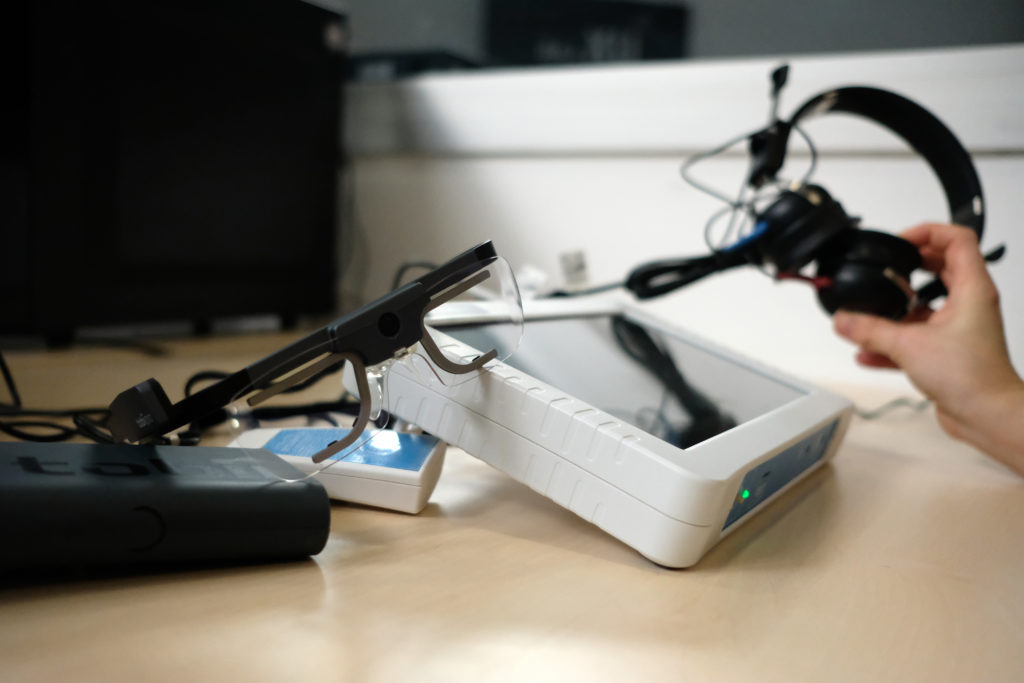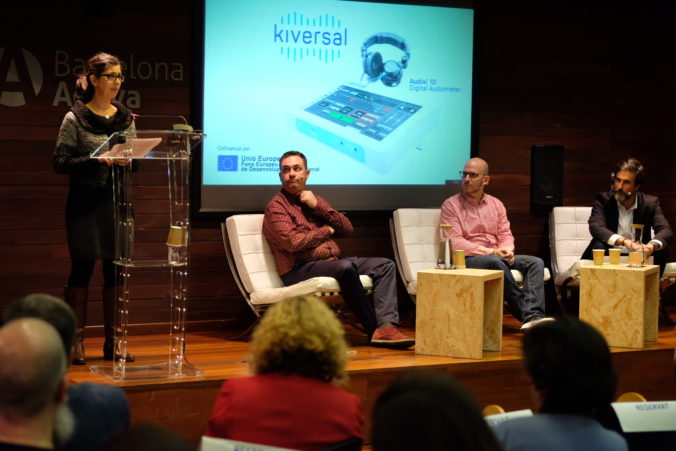At the inauguration of UXLab earlier this month
UXLab: the usability laboratory for SMEs and startups
On Wednesday 16 January, Barcelona Activa inaugurated the new User Experience Lab (UXLab). Located at the Glòries Business Incubator, it allows SMEs and startups to test their products and services.
The usability centre was co-financed by the ERDF (European Regional Development Fund) and aims to anticipate the user experience with a certain product or service.
The presentation began with a talk by Sara Berbel, CEO of Barcelona Activa, and a round table discussion on usability, after which Piedad Díez was introduced to explain the importance of usability testing, particularly for medical devices such as the Audixi 10 digital audiometer. “For companies like ours, this type of test is crucial as we need to comply with usability standards for medical equipment in order to reduce and/or eliminate any usage risks that may affect the health of the patient or user,” pointed out the Kiversal co-founder. She added, “That is why we need to carry out a usability test and include the results in our Technical File to obtain the relevant regulatory certification, which in the case of Europe is the CE mark.”

Díez also highlighted the importance of testing a device such as an audiometer before launching to market: “Correcting any defects or making any improvements on a design level during the testing phase is a lot cheaper than once the device is in the market. This is even more so in the case of medical devices.”
Audixi 10’s usability test employs eye-tracking
After presenting the product and explaining the importance of this type of task, Piedad Díez detailed the main objectives of the usability test, which was designed in collaboration with UX Lab:
- Switching the device on
- Usability of the audiometer: its mechanical ergonomics, the touchscreen interface (including the testing of icons, colours, screens and actions)
- The user’s comprehension of the information architecture and navigation between different screens
In order to achieve these objectives, audiologists and hearing aid specialists took part in the test, completing a series of representative tasks involved in using the device and stating their opinion on its usability and accessibility (how easy or difficult they found using the navigation system), and if they would make any changes to the device’s design.

“It was very important for us to be present during the test–not just the company founders, but part of our technical staff, too. The fact that the person in charge of designing the software and screen transitions was able to observe the testing and watch the users’ interaction with our product was key to directly identifying where improvements needed to be made and the types of changes needed,” stated Díez during her talk.
The Kiversal team was able to witness what was happening in the testing area from the control room, by means of a glass observation panel and a computer screen that was connected to the eye-tracking glasses worn by the test participants. This technology allowed the team to see exactly where the user was looking during each task, see what they were looking at, identify any problems they encountered, determine if the device was simple and clear enough to use without a user manual or how the user navigated through the audiometer interface, among other things.

To conclude her talk, the
Photo credit: Barcelona Activa

0 Comments
2 Pingbacks